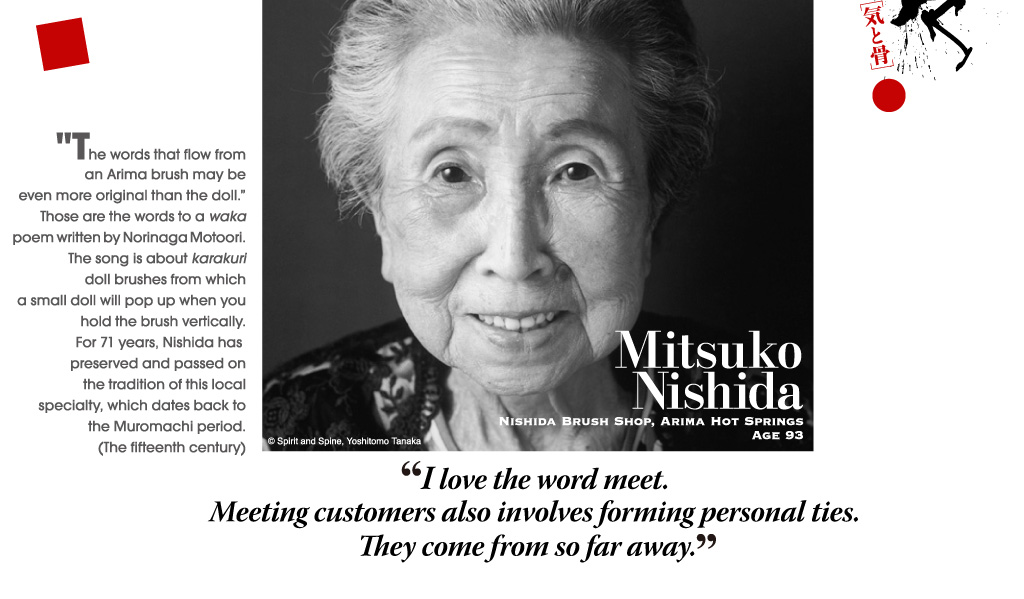Nishida diligently carries on the task of winding thin Nishijin silk thread in a variety of colors around the brush. She places the small doll, which has a special mechanism, inside the brush and attaches the tips. After that, she checks the quality of the brush. In addition to traditional patterns such as arrows and ocean waves, the eye-catching, elaborate pattern is called Yomeimon gate. This was designed by Nishida. Nishida has strived to be innovative while also preserving tradition. The "Meoto-fude" (married couple brush) in which a male doll brush was added was also Nishida's idea.
The brushes signify good luck for bearing children. The reason why her father-in-law, the fifth generation owner, accepted her innovative ideas was because he had already recognized her skills. Arima is a hot spring village with a long and distinguished history as it appears in the Kojiki (Records of Ancient Matters). 70 years ago, however, it was a rural town that was not welcoming for a girl who grew up in Kobe. She married into a merchant family with a long history, and had a hard time getting along with the family as well as her neighbors. Although she downplays her hardships, she went to Manchuria toward the end of World War II, and gave birth to her eldest son when being repatriated to Japan. Although she was able to return to Japan alive, her parent's home was destroyed by air raids. Arima had also endured a famine. Revenues from the brushes did not make a resurgence until the World's Fair.
"I am confident that I can overcome any hardships, no matter how tough they may be," she says with a slight grin. During her turbulent life, she was blessed with five grandchildren and ten great grandchildren. Nishida, who always sits up straight and greets her customers, carries on with her daily routine of making handmade brushes.







































































































